Colored Pencils vs. Pastel Pencils - All Differences
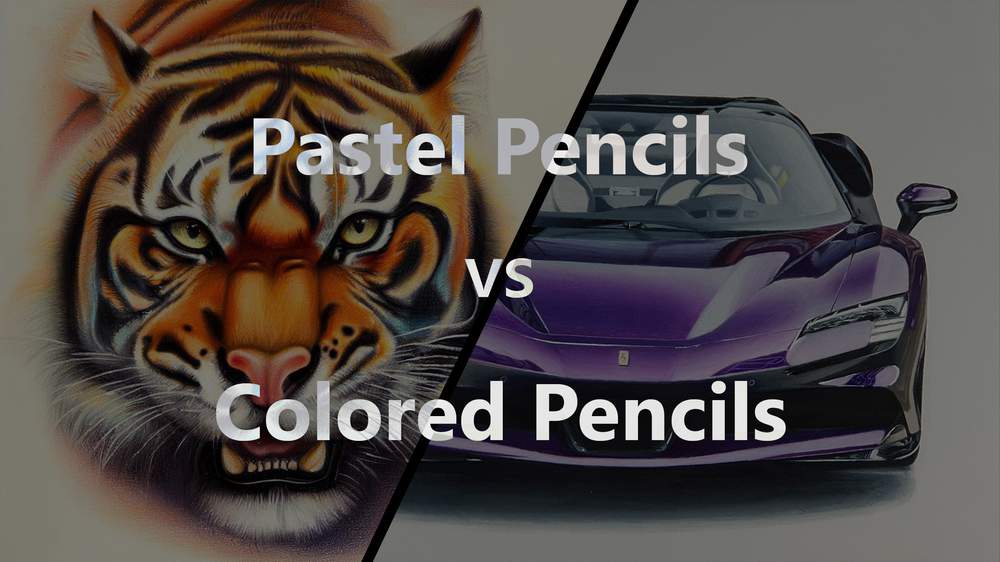
Colored pencils and pastel pencils may appear similar at first glance.
However, they possess unique characteristics and offer different artistic effects, making them suitable for various types of artwork.
In this article, we'll delve into their compositions, features, advantages, and disadvantages.
So, let's get into it!
There are more types of colored pencils than just these two. You can check them all out in this article.
Overview of Colored Pencils

Colored pencils are an art medium constructed of a narrow, pigmented core encased in a wooden cylindrical case. Unlike graphite and charcoal pencils, colored pencils' cores are made up of a mix of pigments, additives, and binding agents, which can be either wax-based or oil-based.
Core Characteristics and Features of Colored Pencils
1. Wax-Based vs. Oil-Based Colored Pencils
Wax-based colored pencils have a softer core, allowing for rich color payoff and easy blending. They tend to have a luminous quality due to the wax content but can result in a build-up of wax bloom, a cloudy film over the artwork. On the other hand, oil-based colored pencils have a harder core, providing more control for detailed work. They also maintain their sharpness for longer periods, perfect for intricate designs.
If you want to learn more about the differences between wax and oil-based pencils, check out this article.
2. Variety of Colors and Color Intensity
Colored pencils come in a wide array of colors, from vibrant hues to subtle shades, providing an extensive palette for artists. High-quality colored pencils often have higher pigment concentration, resulting in more vivid and intense color application.
3. Layering and Blending Techniques
Colored pencils are excellent for layering and blending, enabling artists to create a variety of tones and effects. Layering is applying multiple layers of color to build depth and complexity, while blending involves merging different colors to create smooth transitions and gradients.
Advantages of Using Colored Pencils
1. Ease of Use
Colored pencils are straightforward to use, making them a great medium for beginners. There's no need for any additional materials or preparations - you can simply start drawing. They do not require any special preparation or clean-up and are ready to use straight out of the box.
2. Control and Precision in Detailed Work
Due to their hard and sharp points, colored pencils provide superior control and precision, making them ideal for detailed work and intricate designs.
3. Ability to Achieve Realistic Textures and Effects
With the right techniques, colored pencils can create a range of textures and effects, from the smoothness of skin to the roughness of bark, thereby providing great versatility in creating realistic drawings.
Disadvantages of Using Colored Pencils
1. Creating Very Smooth Color Transitions Can Be Difficult
While it's possible to achieve smooth color transitions with colored pencils, it can be challenging and time-consuming, particularly for beginners who may struggle with blending techniques.
2. Creating Larger Artwork Can Be Very Time-Consuming
Given the precision of colored pencils, filling in larger areas or creating larger works of art can be time-consuming, as it requires the careful application of numerous layers of color.
Overview of Pastel Pencils
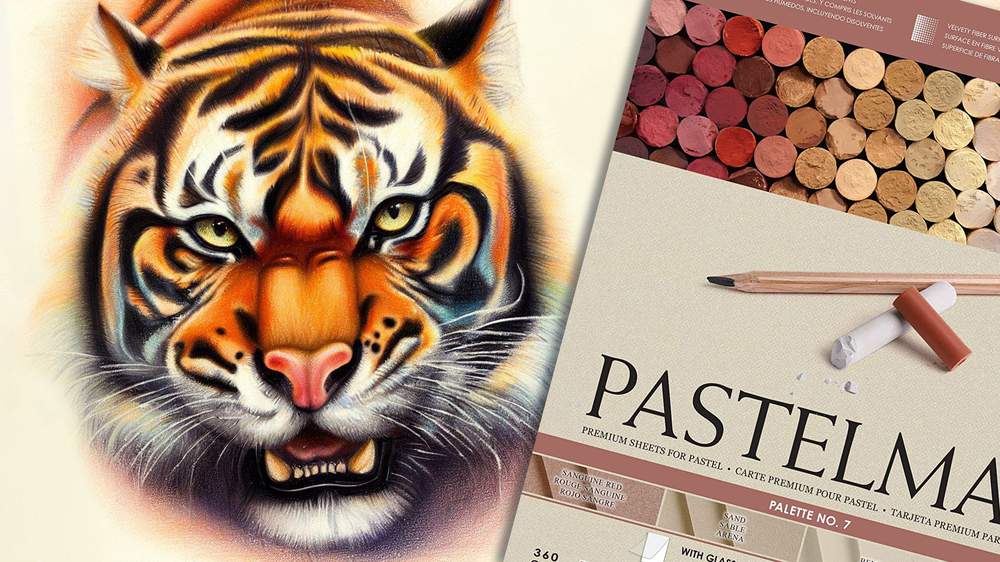
Pastel pencils share the convenient, pencil-like form of colored pencils, but their cores contain the same powdery pigment found in stick pastels. Instead of a wax or oil binder, pastel pencils use a gum or resin binder to give the pigment a semi-hard form that can be encased in wood.
Core Characteristics and Features of Pastel Pencils
1. Softness and Texture of Pastel Pencils
Pastel pencils, like stick pastels, are notably softer than colored pencils. They lay down a velvety texture, and the pigment can be smeared or blended easily on the paper.
2. Range of Colors and Color Vibrancy
Pastel pencils offer a wide range of colors that are typically very vibrant due to the high concentration of pigment and minimal use of binder. The colors can be mixed directly on the drawing surface to create a nearly infinite array of hues.
3. Blending and Layering Techniques Unique to Pastel Pencils
Pastel pencils excel at blending. The soft, powdery pigment can be easily mixed and overlaid, creating seamless color transitions and gradients. Layering pastel pencil colors can create a rich depth in artwork, but care must be taken not to overdo it as the pigment can become overloaded and may not stick to the paper.
Advantages of Using Pastel Pencils
1. Expressive and Vibrant Results
Pastel pencils, due to their rich pigment and blendability, allow artists to achieve expressive, vibrant results. Their bold and intense color payoff makes them ideal for creating striking and dramatic artwork.
2. Versatility in Creating Various Artistic Effects
Due to their blendability and the range of available colors, pastel pencils are incredibly versatile. Artists can create a variety of effects, from soft and subtle to bold and dynamic.
3. Compatibility with Other Pastel Mediums
Pastel pencils can be used in conjunction with other pastel mediums, such as soft or hard pastels, broadening the range of possible effects and techniques.
Disadvantages of Using Pastel Pencils
1. Point Breaks Easily When Sharpening
The soft core of pastel pencils means they can break easily when being sharpened. Artists often need to use a special sharpener and a gentle hand to avoid breaking the pencil.
2. They Can Be a Bit Messy
Working with pastel pencils can be messy as the powdery pigment tends to produce dust, which can smudge if not handled carefully.
3. Softer Core Makes It More Difficult to Draw Tiny Details
The softness of pastel pencils makes it harder to maintain a fine point, making them less suitable for highly detailed work compared to colored pencils. However, they're excellent for broader strokes and more expressive work.
Differences Between Colored Pencils and Pastel Pencils

Understanding the differences between colored pencils and pastel pencils can guide you in choosing the right medium for your artwork. While there is some overlap, the two have unique characteristics that influence their application, visual effects, and the preservation of artwork.
1. Composition and Core Material
Wax or Oil-Based vs. Chalk or Soft Pastel Core
The composition of colored pencils and pastel pencils significantly impacts their performance and the artistic results they can achieve.
Colored pencils, made with wax-based or oil-based binders, offer more control and precision.
On the other hand, pastel pencils, made with a chalk or soft pastel core, provide expressive and vibrant outcomes due to their high pigmentation and blendability.
Impact on Color Saturation, Blending, and Layering
The composition of the core also influences color saturation, blending, and layering.
Colored pencils can produce highly detailed and finely nuanced artwork, but the process can be time-consuming.
Pastel pencils, conversely, excel in providing bold, saturated colors and allow for easy blending and layering, lending themselves to more expressive and abstract works.
2. Application and Techniques
Control and Precision vs. Loose and Expressive Application
Colored pencils offer superior control and precision, making them ideal for intricate, detailed work. They enable the artist to make fine lines and achieve realistic textures.
Conversely, pastel pencils, due to their softness, are more suited to broader strokes and a loose, expressive application, although they can still achieve a level of detail.
Ability to Create Fine Details and Intricate Designs
The precision offered by colored pencils allows artists to create finely detailed and intricate designs, such as those found in botanical art or portrait work.
On the other hand, while pastel pencils can be used for some detailed work, their strength lies more in the creation of larger, more impressionistic, or expressive pieces.
3. Visual Effects and Styles
Realistic Textures and Smooth Color Transitions with Colored Pencils
Colored pencils excel at creating realistic textures and smooth color transitions, making them a great choice for realistic or semi-realistic work. The ability to build up layers gradually allows for a nuanced depth of color and a high degree of detail.
Bold and Textured Effects with Pastel Pencils
Pastel pencils can produce bold and textured effects, making them suitable for works that are more expressive or abstract. They are particularly useful for creating vibrant landscapes, portraits, or still lifes.
4. Fixatives and Permanence
Fixative Requirements for Pastel Pencils
Pastel pencil works often require the use of a fixative to prevent smudging and preserve the artwork. Applying a fixative is a delicate process, as an improper application can darken or alter the colors.
Longevity and Preservation of Artwork
On the other hand, colored pencil artworks, particularly those made with high-quality, lightfast pencils, have good permanence and longevity without the need for a fixative, although some artists choose to use one for added protection. It's also essential to consider the type of paper or surface used, as this can influence the lifespan of the artwork.
Choosing Between Colored Pencils and Pastel Pencils

The choice between colored pencils and pastel pencils largely depends on your personal preferences, the desired effects and textures, the working conditions, and your skill level and experience.
1. Considerations for Different Artistic Styles and Preferences
The style of art you prefer can guide your choice of medium. If you are inclined towards precise, detailed work or enjoy creating realistic textures, colored pencils may be the better option. Conversely, if you prefer a loose, expressive style with vibrant, bold colors, you might find pastel pencils more suitable.
2. Factors Influencing Choice of Medium
Desired Effects and Textures
Your decision might be influenced by the effects and textures you want to achieve. Colored pencils offer precision and control, allowing you to create intricate details and realistic effects. Pastel pencils, on the other hand, are perfect for achieving a range of artistic effects, from soft and subtle blends to dynamic and vibrant strokes.
Working Conditions and Portability
If you travel often or like to work in different locations, colored pencils, being compact and mess-free, might be the more practical choice. Pastel pencils, while still portable, can be a bit messy due to the powdery pigment.
Skill Level and Experience
Your skill level and experience with different mediums can also influence your choice. Colored pencils might have a more straightforward learning curve for beginners, whereas pastel pencils, although not particularly difficult, can take some time to master due to the different blending and layering techniques.
3. Tips for Experimenting and Combining Both Mediums
Why limit yourself to just one medium?
Combining colored pencils and pastel pencils in a single piece of artwork can create exciting effects and allow you to leverage the strengths of both. You could start a piece with pastel pencils to lay down broad strokes and vibrant colors, then add intricate details with colored pencils. Experiment and play around with both mediums to find unique combinations that suit your artistic vision.
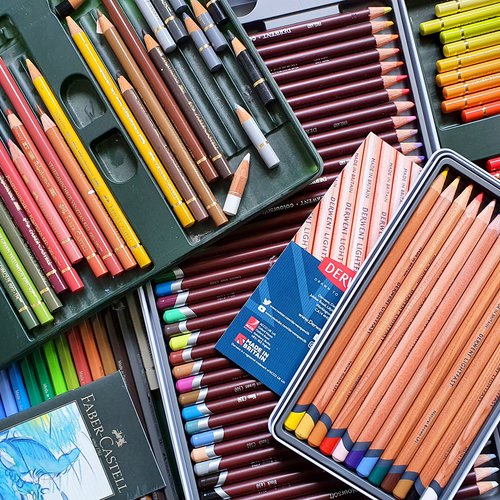
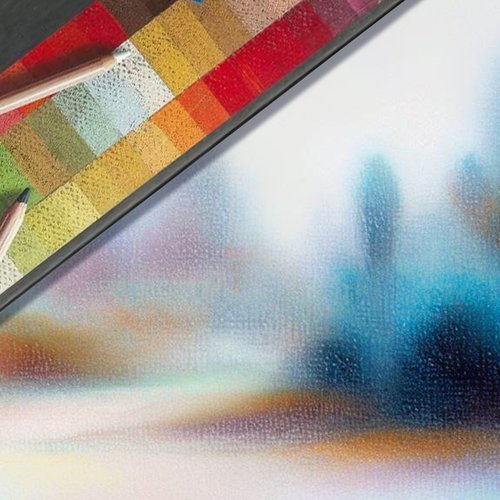

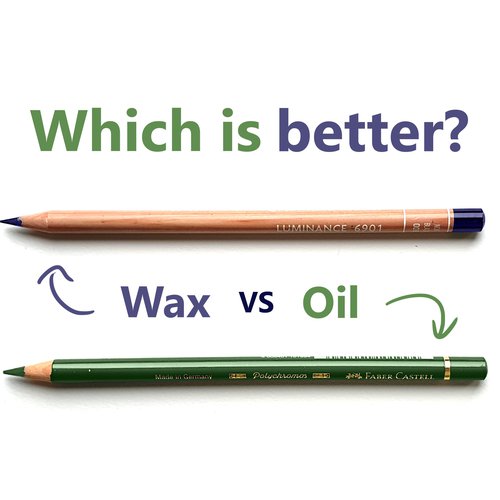
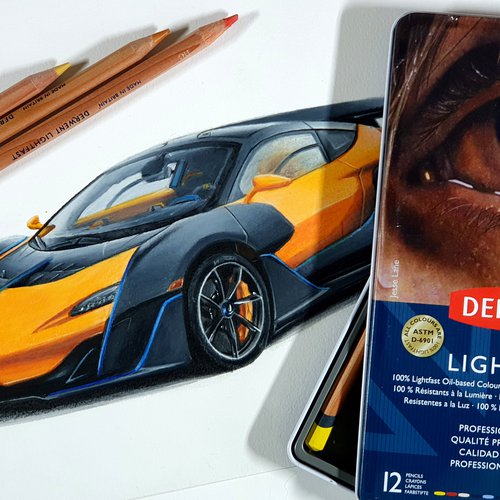

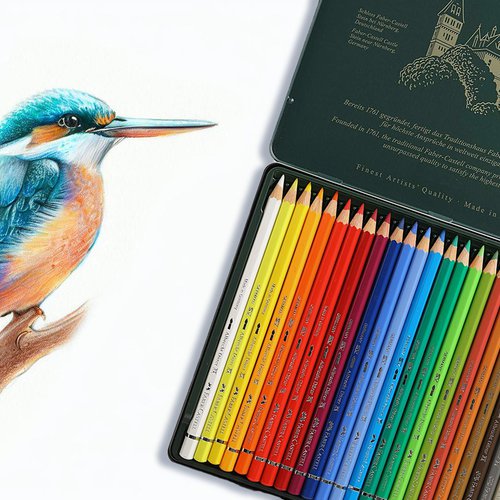





Add a comment
Comments
Excellent article!! Answered many of my questions without going on and on! Thank you.